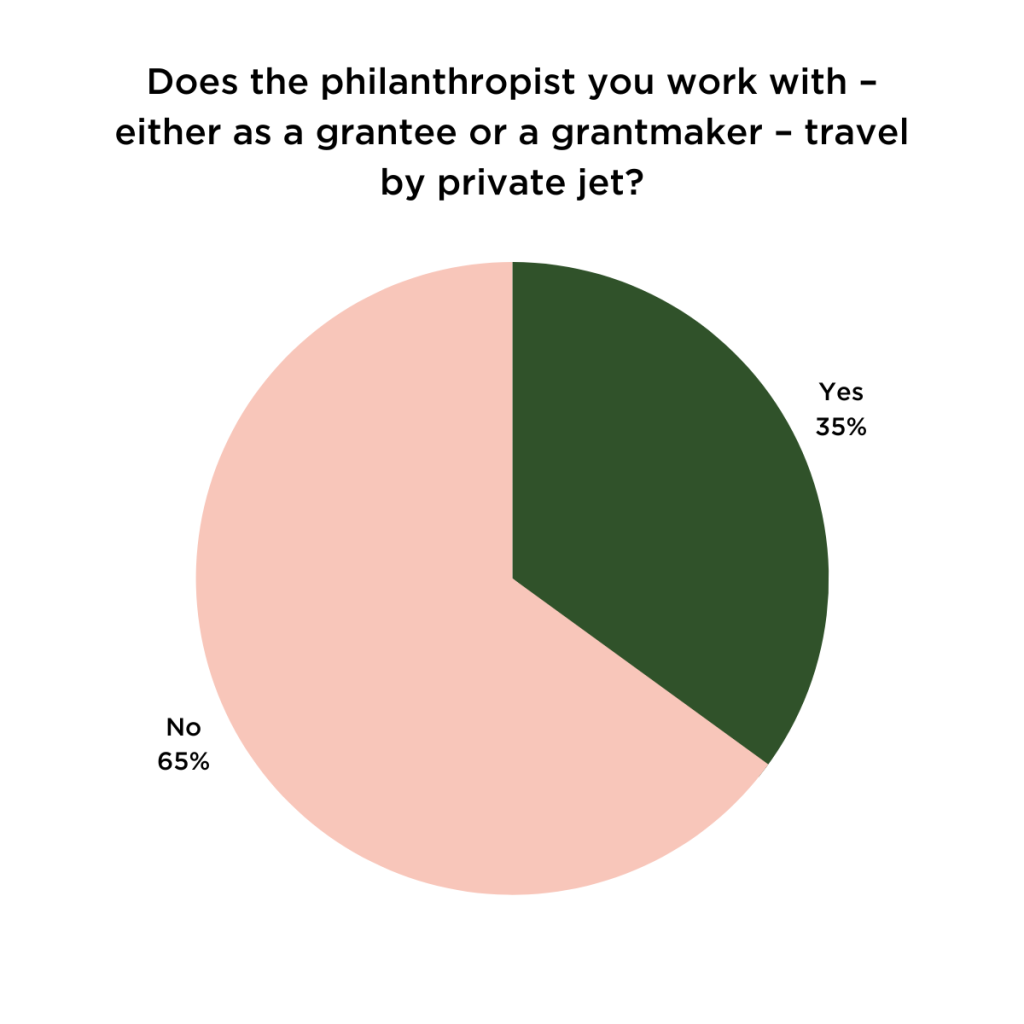As part of our ClimatePhilanthropy2030 project, Alliance wanted to know whether foundations were leading by example on climate action by finding out what’s happening inside the house.
So we surveyed our readers to ask: how are your organisations making your own internal operations more climate-friendly?
We received 44 responses, of which a majority were professionals from the sector representing both funders and grantees.
Here’s what they had to say.
Assessing organisations
When we asked Alliance readers if their organisation had internal policies to make its own operations more climate-friendly, 67 per cent of respondents said yes.
One respondent commented that there’s no formal policy in place, but their organisation has ‘a mutual board approval to consider climate change mitigation in each grant and for each due diligence process.’
However, even though most organisations have some sort of policy in place, Alliance readers overwhelmingly felt that more could be done with 85 per cent responding that their organisations still needed to improve internal practice when it comes to climate change.
‘People in more organisations make grand exceptions for their own travel behaviour – arguing, for example, that they must be present for far-flung COP meetings and “field visits”. Philanthropies’ own hubris gets in the way of taking substantive action’, one reader commented.
When it came to funders and grantmakers imposing their own ideas about climate on grantees, interestingly, only 46 per cent of respondents replied that they asked their grantees to adopt climate-friendly policies in their work in the field.
The endowment question
Half of respondents to the Alliance survey work with endowments, and of that half, there was an even split between whether their investments were divested from fossil fuels.
Business travel
Travel for work is a place where many organisations add significantly to their carbon footprint. We wanted to understand more about how this looks across the sector, so we asked Alliance readers about their policies with business class, taking trains, and if they work with philanthropists who fly private.
‘We consider carefully which events we really need to travel and attend in person. If possible, we consider virtual events,’ replied one Alliance reader.
Holding events
Beyond travelling to events, holding your own conferences is another area where philanthropic organisations and the nonprofits they support are considering how to reduce their carbon footprint.
Our survey found that 34 per cent of readers make an effort to hold their own in-person events in a location that’s easily accessible by public transportation. Beyond that, many respondents were considering the physical materials created by conferences – with 28 per cent saying they do their best to have ‘paper-free’ events by putting all their content online or in an app; 20 per cent avoid conference swag; and 11 per cent ask conference sponsors to also do the same.
Six per cent responded that they only cater vegan or vegetarian options.
And others wrote in to say they do their best to host events at ‘a 100 per cent renewable location’ or hold it in a ‘LEED certified space’[1].
Office space
There’s been a big shift in the way teams are using workspaces since the pandemic disrupted our normal working patterns. We wanted to know if there were upgrades to office spaces to make them more climate-friendly.
While a majority responded no, 23 per cent indicated there were plans to upgrade their office spaces and another 23 per cent said yes there had been upgrades. Nine per cent of respondents worked at a fully remote job.
One reader said their office had ‘fully renovated and remodeled the five-year-old space using new but “green” materials and designs like artwork that reflect a beautiful natural environment.’
Another replied: ‘We rent our space so we depend on landlord actions and push for more. We do regulate heat and air conditioning, actively compost food waste, separately gather and donate coffee grinds for mushroom cultivation, separate trash for recycling, eliminate plastic cutlery, choose for vegetarian catering.’
Another reader said the lack of upgrades to their building was in fact pushing them to move their office to another building.
ClimatePhilanthropy2030
 How is your organisation working on climate? Alliance has made a commitment to increasing climate coverage, as we believe it’s a defining issue of our decade. If you have a climate story, get in touch at alliance@alliancemagazine.org.
How is your organisation working on climate? Alliance has made a commitment to increasing climate coverage, as we believe it’s a defining issue of our decade. If you have a climate story, get in touch at alliance@alliancemagazine.org.
Footnotes
- ^ LEED certified stands for Leadership in Energy and Environmental Design. It is a green building certification programme used worldwide.













Comments (0)
It makes sense to place focus on maintaining accountability towards donors and the civil society groups receiving funding, since the balanced approach acknowledges the necessity for responsibility in several directions.
the survey results suggest that the philanthropic sector is taking steps to address climate change, but there is still room for improvement.